The new year is here, but the old year is not forgotten. Here are a handful of our highlights from 2019:
HABITAT
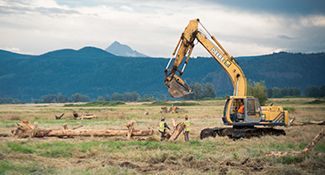
Broke ground on the Steigerwald Floodplain Restoration Project. Once complete, the project will reconnect 965 acres of floodplain habitat to the mainstem Columbia River, while also protecting nearby community members and businesses from flooding. In 2019, crews installed large wood habitat structures in Gibbons Creek’s future alluvial fan, treated invasive species like bamboo, and began replanting areas with the help of volunteers and students. Two more years of construction remain.
More coverage >>>
STEWARDSHIP
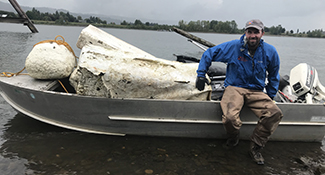 Cleaned up a stretch of Willamette River and Multnomah Channel in September. By far the most common item picked up was car and truck tires, but we also collected copious amounts of styrofoam, barrels, and abandoned fishing gear. The amount of litter easily eclipsed our time and human power, so we know there is a huge need for more resources to clean up our river.
Cleaned up a stretch of Willamette River and Multnomah Channel in September. By far the most common item picked up was car and truck tires, but we also collected copious amounts of styrofoam, barrels, and abandoned fishing gear. The amount of litter easily eclipsed our time and human power, so we know there is a huge need for more resources to clean up our river. Hosted 12 volunteer plantings around the region, including at new-to-us sites along Fox Creek in Rainier, Keller Woodlands in Portland, and Curtin Springs in Vancouver. At Fox Creek we had the opportunity to partner with the Friends of Fox Creek to help advance habitat work they have already done. Altogether, volunteers planted 8,265 native trees and shrubs.
STORMWATER
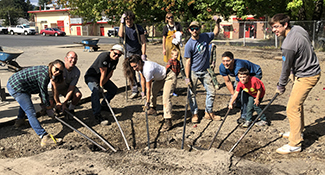
Depaved about 3,000 square feet of asphalt from North Portland’s Sitton School. The area will be replaced with trees and native plants to infiltrate stormwater, provide shade, and offer a site for students to learn about urban ecology and stormwater on their school grounds. Photos from the depaving here.
DIVERSITY, EQUITY AND INCLUSION
 Began the year with a Building the Foundation DEI training from Center for Diversity and the Environment (CDE) for all staff. An internal team of staff and Board members has been working to develop an Equity and Inclusion Strategic Plan so we better serve everyone in our community, and we have worked to strengthen and reshape our partnerships with groups led by and for People of Color and other marginalized groups in our community.
Began the year with a Building the Foundation DEI training from Center for Diversity and the Environment (CDE) for all staff. An internal team of staff and Board members has been working to develop an Equity and Inclusion Strategic Plan so we better serve everyone in our community, and we have worked to strengthen and reshape our partnerships with groups led by and for People of Color and other marginalized groups in our community.
CLIMATE
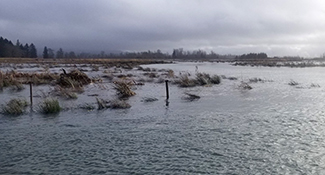
Worked towards being a “climate smart” conservation program. We evaluated how our habitat coverage targets (how much of various different habitats we should have along the lower river) will be affected by climate change and sea level rise, and assessed approaches to help species adapt. Next year, in 2021, we will construct a pilot project to enhance cold water input from Horsetail/Oneonta Creeks to aid in fish migration through a long stretch of the Columbia without cold water refuges.
REGIONAL SUCCESS
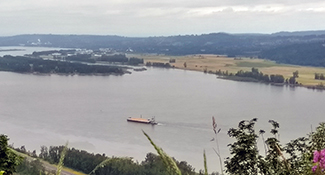
The Columbia River Basin Restoration Act, passed in 2016, was allocated $1 million for competitive grants and began accepting applications for funding. This is a significant step in cleaning up toxics from the Columbia Basin.
WATER TRAIL
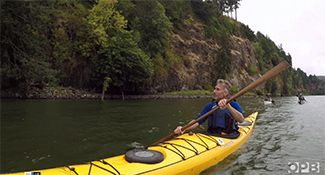
The Lower Columbia River Water Trail was profiled on Oregon Field Guide. Be sure to watch the segment featuring the Portland All Nations Canoe Family, Columbia River Kayaking, and the Estuary Partnership’s own Chris Hathaway.
Writer and photographer Neil Schulman created some amazing trip recommendations, and we posted a few of them for your perusal on our Water Trail site!
OUTDOOR SCIENCE
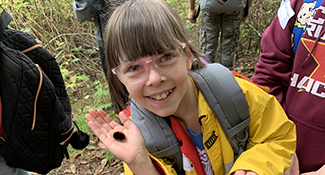
Got thousands of kids outside to engage their minds and bodies while they learn lessons about watershed ecology, plant trees to improve habitat, and paddle our Big Canoes. One of the many schools we worked with is Jason Lee Elementary in East Portland, who kicked off this school year’s field trips at Oxbow Park.